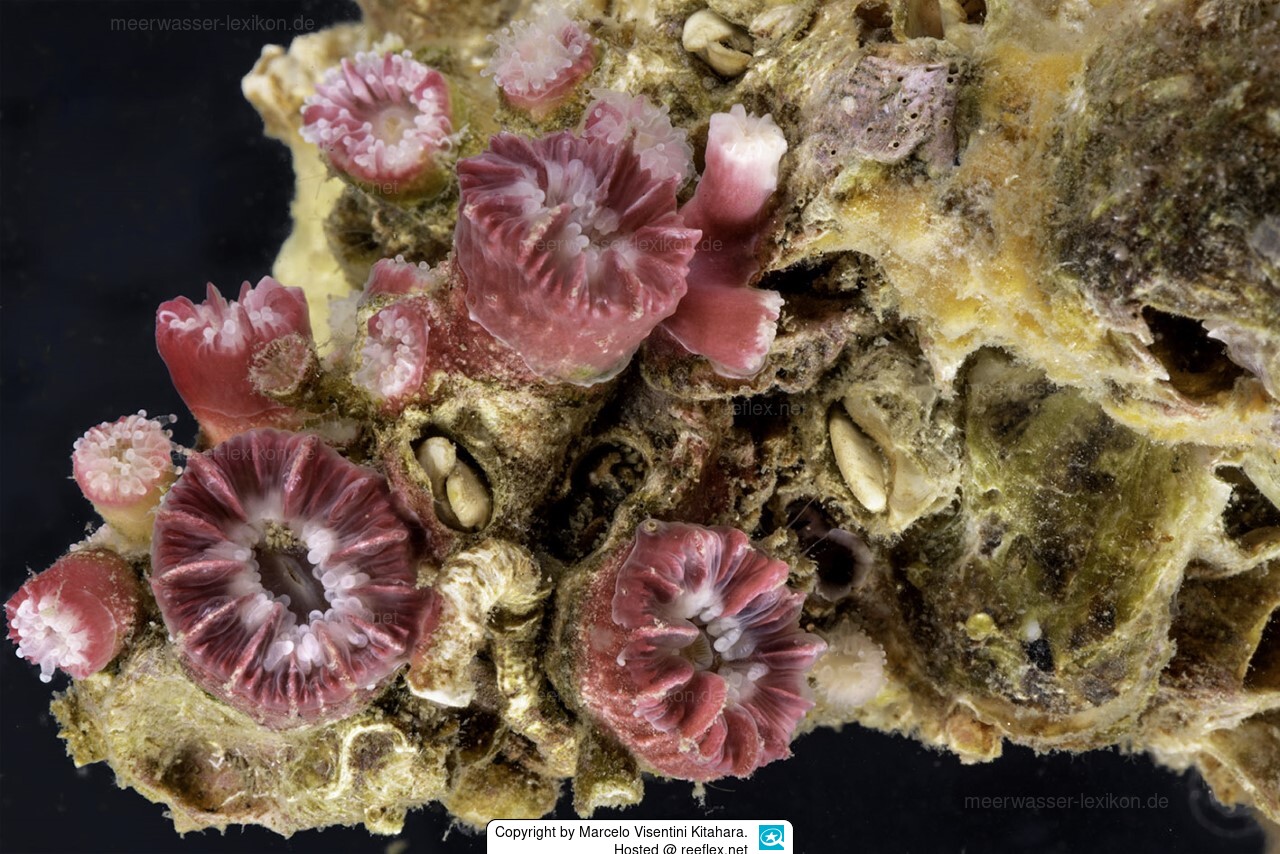Info
The family Caryophylliidae Dana, 1846 is reported from the Antarctic to the Arctic, from shallow to deep waters, and includes 51 living genera and over 300 species.
During dives carried out in December 2019 on the main island of the Alcatrazes Archipelago and on Rasa Island on the Brazilian coast.several colonies of a new coral species of the genus Coenocyathus, a kind of azooxanthellate corals, i.e. a coral species that does not live in symbiosis with algae and is called Zooxanthlas, were collected.
Coenocyathus sebroecki was surprisingly not brought to the surface by underwater or deep sea trawls, but by SCUBA divers!
The colonies of C. sebroecki were found at the relatively shallow depth of 30 meters in the Alcatrazes Wildlife Refuge, State of São Paulo, and at 18 meters near Ilha Rasa, State of Rio de Janeiro, both in southeastern Brazil.
What makes the discovery of this new coral so interesting is that it is not a tiny coral, as in so many recent discoveries - instead it is populated by coralites up to 13 mm in diameter and 25 mm high, and since the Brazilian coral is colonial, it can grow into patches of larger, more visible colonies. Even more interesting is that the polyps of Coenocyathus sebroecki have a very bright pink colour and are theoretically the result of a certain degree of endolithic algae growing opportunistically in the coral skeleton, but further research is needed to determine the nature of this relationship.
The species name was chosen in honour of Joseph Marie Etienne van Sebroeck.
Our very special thanks for the first photo of this new hard coral go to Prof. Dr. Marcelo Visentini Kitahara of the Universidade Federal de São Paulo,
Source:
Kitahara, M.V., Capel, K.C.C. & Migotto, A.E.
Coenocyathus sebroecki sp. nov.: a new azooxanthellate coral (Scleractinia, Caryophylliidae) from southeastern Brazil.
Mar. Biodivers. 50, 59 (2020). https://doi.org/10.1007/s12526-020-01077-5
During dives carried out in December 2019 on the main island of the Alcatrazes Archipelago and on Rasa Island on the Brazilian coast.several colonies of a new coral species of the genus Coenocyathus, a kind of azooxanthellate corals, i.e. a coral species that does not live in symbiosis with algae and is called Zooxanthlas, were collected.
Coenocyathus sebroecki was surprisingly not brought to the surface by underwater or deep sea trawls, but by SCUBA divers!
The colonies of C. sebroecki were found at the relatively shallow depth of 30 meters in the Alcatrazes Wildlife Refuge, State of São Paulo, and at 18 meters near Ilha Rasa, State of Rio de Janeiro, both in southeastern Brazil.
What makes the discovery of this new coral so interesting is that it is not a tiny coral, as in so many recent discoveries - instead it is populated by coralites up to 13 mm in diameter and 25 mm high, and since the Brazilian coral is colonial, it can grow into patches of larger, more visible colonies. Even more interesting is that the polyps of Coenocyathus sebroecki have a very bright pink colour and are theoretically the result of a certain degree of endolithic algae growing opportunistically in the coral skeleton, but further research is needed to determine the nature of this relationship.
The species name was chosen in honour of Joseph Marie Etienne van Sebroeck.
Our very special thanks for the first photo of this new hard coral go to Prof. Dr. Marcelo Visentini Kitahara of the Universidade Federal de São Paulo,
Source:
Kitahara, M.V., Capel, K.C.C. & Migotto, A.E.
Coenocyathus sebroecki sp. nov.: a new azooxanthellate coral (Scleractinia, Caryophylliidae) from southeastern Brazil.
Mar. Biodivers. 50, 59 (2020). https://doi.org/10.1007/s12526-020-01077-5







 Prof. Dr. Marcelo Visentini Kitahara, Brasilien
Prof. Dr. Marcelo Visentini Kitahara, Brasilien



